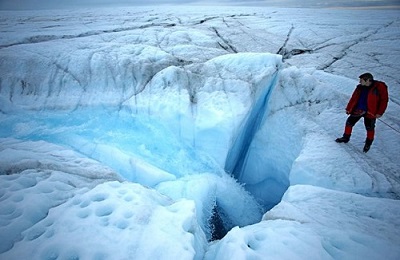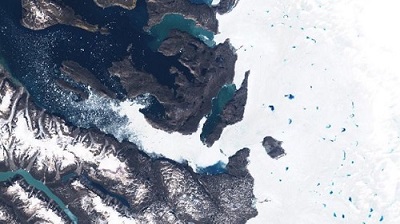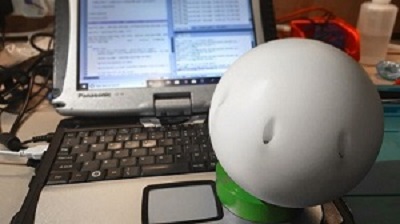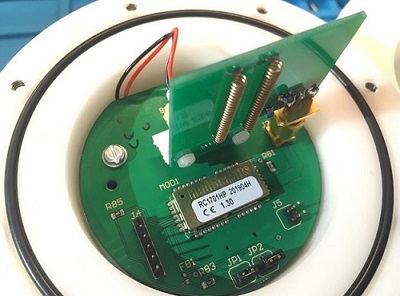Scientists from all over the globe have been trying to gather information on water movement beneath the Greenland ice sheet for more than a decade now. Recently, a team led by the University of Cardiff created a new and innovative solution to this problem known as a “Cryoegg” with an embedded Radiocrafts RC1701HP-MBUS4 module inside.

The Study:
The Cryoegg was designed to give researchers information on the way that glaciers slide towards the ocean, but specifically, it will report on the behavior of meltwater that runs beneath the ice. This meltwater facilitates the flow of glaciers in the ocean. The Cryoegg will measure water temperature, pressure (measures structural organization of the water under the ice sheets), and conductivity (measures how long meltwater has been residing in a specific location) at the base of the ice sheet.
However, in warmer temperatures, the discharge of ice into the ocean increases which could have devastating effects on global levels. Just to give you an idea, if all the ice in Greenland were to melt, the global sea levels would rise by 7 meters which would put many of our coastal cities worldwide under water. Scientists want to figure out how quickly this process could happen.

Cryoeggs will be located in two different locations. One location is at the Eastgrip ice coring site in northeast Greenland where a 2.5km-long ice core is being drilled. This is not sufficiently deep to reach the bed of the glacier but should be deep enough to provide some efficient test results for the Cryoegg’s radio communications. The second location is at the RESPONDER Site at Store Glacier towards the West of Greenland. The drilling operation here will be 1.2km deep and will reach the glacier bed. The Cryoeggs will be lowered on long lines to the bottom of the drill holes.

What is a Cryoegg?
A Cryoegg is a 1.2kg, 120mm-diameter sphere which contains 3 sensor technologies for measuring water temperature, humidity, and conductivity. The egg-shaped device also contains a radio system to send its data through the ice and back to the surface, and a battery which can last up to a year. The antenna which receives the signals from the radio system is held in a children’s climbing frame which can mounted into several different shapes depending on the requirements.

The Radio System – Radiocrafts RC1701HP-MBUS4 Module
The radio system being used by Cardiff University researchers to study the movement of water under the ice sheets of Greenland is the Radiocrafts RC1701HP-MBUS4 module.
The RC1701HP-MBUS4 module operates in the 169 MHz ISM band. The 169 MHz band allows for good performance in terms of coverage, penetration, and consumption of battery, while still ensuring a sufficient bitrate. This is important in applications where propagation conditions are poor.

Radiocrafts has seen a rise in popularity for the RC1701HP-MBUS4 module because it can be used in various applications where a device is placed in a “hard-to-reach” location and where propagation conditions are poor. Two notable and innovative solutions include using a Cryoegg to measure the water behaviour beneath the surface of a glacier, and, a new tank level measurement device from Alisonic for petrol tanks buried 1-meter underground. You can read about the Alisonic tank level measurement device here.
The most important radio characteristic is the wavelength, where the long wavelength of the 169 MHz frequency can successfully penetrate objects where higher frequencies cannot.
Additional benefits of using the 169 MHz band include:
- Longer range due to lower frequency.
- Improved communication reliability due to the improved link margin.
- Improved reliability as the 169 MHz band is not used as much as other ISM bands, hence less interference in the 169 MHz frequency band.
The RC1701HP-MBUS4 has built in support for antenna tuning, and we have released an application note AN025: Tuning the Antenna with Antenna Tuning Feature, to help our customer to create their own tuned 169 MHz antenna.
You can find documentation on Radiocrafts’ RC1701HP-MBUS4 module at our document library here.
To find more information about the 169 MHz frequency, you can:
- Read our blog post on why 169 MHz solutions are becoming essential for the sustainability of our growing cities here.
- Read our white paper on regulatory requirements at 169 MHz here.
- Read our white paper on LPWAN’s at 169 MHz here.
For more information on the Cryoegg and the project itself, you can contact Cardiff University via their contact page here.

